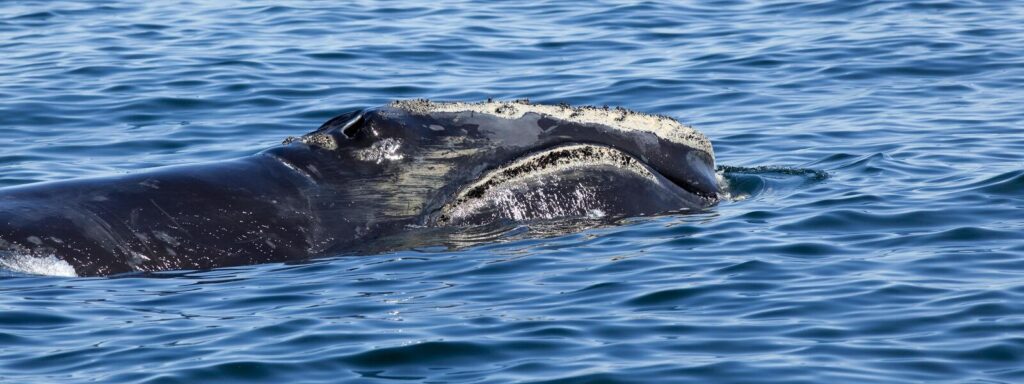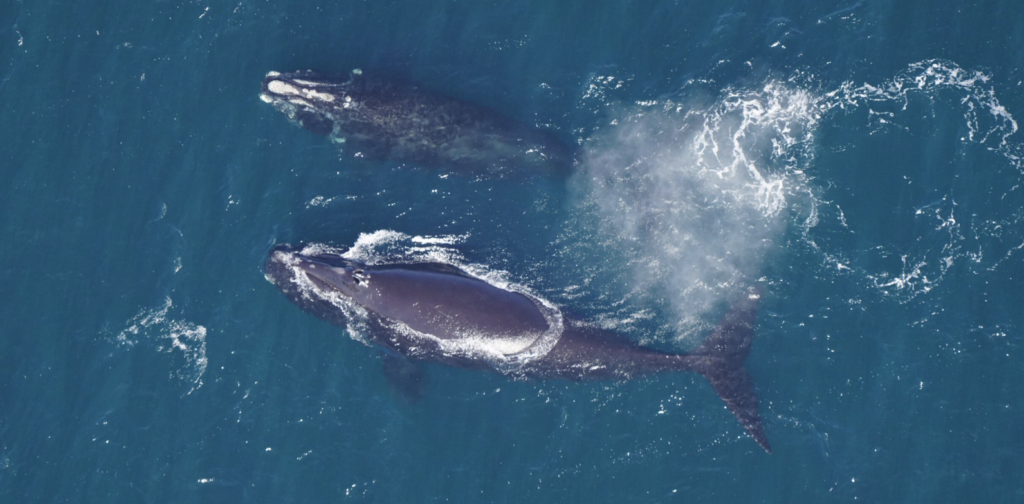
NOAA set to delay decision on whale-strike speed rule
The National Oceanic and Atmospheric Administration (NOAA) is expected to delay its expansion of the 2008 North Atlantic Right Whale Vessel Strike Reduction rule until 2024.
NOAA Fisheries is proposing changes to the North Atlantic right whale (Eubalaena glacialis) vessel speed regulations (NARW) to further reduce the likelihood of mortalities and serious injuries to critically endangered right whales from vessel collisions. The proposal had been due to take place by the end of 2023.
Under the proposed expansion, all boats 35ft and greater cannot travel faster than 10 knots (11 mph) within a vast area extending from Massachusetts to central Florida, for up to seven months of the year and, in some places, up to 90 miles offshore.

North Atlantic right whale off Grand Manan Island, Bay of Fundy, New Brunswick, Canada.
However, Bloomberg Law reports that NOAA is considering changes to this expansion. Bloomberg reports the revision would apply only to boats measuring over 65ft.
“We are encouraged by the reports that the National Oceanic and Atmospheric Administration (NOAA) has decided to delay their proposed vessel speed restrictions along the Atlantic Coast,” says Frank Hugelmeyer, president of the National Marine Manufacturers Association (NMMA), which is lobbying against the proposal.
“This harmful proposal has the potential to significantly impact boater safety and coastal economies across the Eastern Seaboard. We will continue to engage NOAA to find a balanced solution that protects the North Atlantic right whale without jeopardising small businesses and the livelihoods of hardworking Americans.”
In a statement, NMMA says it continues to pressure the administration to pause the rule, while continuing efforts to drive bipartisan support for the Protecting Whales, Human Safety, and the Economy Act. The association says this legislation would pause the NARW rule and ‘appropriate $5 million to the authorised real-time monitoring programme that is focused on developing and deploying innovative, scalable technology solutions to facilitate dynamic management of mitigating vessel strike risk for recreational boats.’
A new estimate from the North Atlantic Right Whale Consortium finds that the critically endangered North Atlantic right whale population remains at risk of extinction, with only around 356 whales in 2022.

In 2021, their population estimate was around 340 North Atlantic right whales, but was recalculated to 364, primarily due to the recent cataloging of 18 calves born in 2021.
Collisions with boats are a leading cause of North Atlantic right whale injury and death. They are slow, swimming around 6 miles (or 9.5 kilometres) per hour, usually near the water’s surface. They are also dark in colour and lack a dorsal fin, making them very difficult to spot. Studies have found that the speed of a vessel is a major factor in vessel-related collisions with North Atlantic right whales. At high speeds, vessels cannot manoeuvre to avoid them, and they swim too slowly to be able to move out of the way. This puts them at great risk of being struck, which can cause deadly injuries from blunt-force trauma or cuts from propellers.
Main image: A right whale breaches. Image courtesy of NOAA Fisheries.
The post NOAA set to delay decision on whale-strike speed rule appeared first on Marine Industry News.
